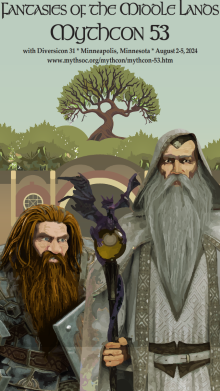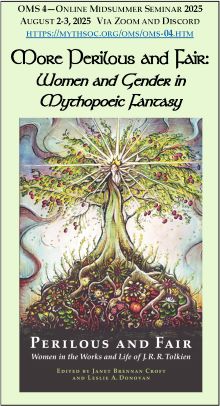Loading...
Location
Minneapolis, Minnesota
Document Type
Presentation
Event Website
https://www.mythsoc.org/mythcon/mythcon-53.htm
Start Date
4-8-2024 1:30 PM
End Date
4-8-2024 2:20 PM
Description
The complex and sometimes contradictory origin and use of the term Middle West—an evolving concept especially during the later American Expansionism period (primarily 1880 and after)—impacted the imagination of its writers. Their works view the Middle West as an idyllic place that occupies a central part of their personal and cultural pasts, and as a mediator between East (aged, urban and jaded) and West (wild, youthful, untamed). Middle West rests on yeomanry, an Old-World concept which Jefferson especially admired, embodying the virtues of maturity, wisdom, and kindness: “The pastoral ideal, a haven midway between the corruptions of urban civilization and the dangerous untamed wilderness, has been a symbol, dream, and even definition for America since its discovery” (“The Emergence of Middle West as an American Regional Label” 214). For each artist, a particular place in the “Middle West” landscape invokes a personal nostalgia, while culturally it serves as a receptacle of core values that negotiates between East and West, individualism, and collectivism. This paper discusses the idea of Middle West in exemplary imaginative works: Sherwood Anderson’s Winesburg, Ohio (1919), F. Scott Fitzgerald’s The Great Gatsby (1925), Walt Disney’s “Mainstreet,” inspired by his childhood in Marceline, Missouri, and Ray Bradbury’s “Greentown,” based on a childhood summer in 1928 in Waukegan, Illinois as recounted in Dandelion Wine (1957). The narrow time period in which these writers were born, along with the impact of the First World War, instills the longing for a prelapsarian Middle West and the pastoral ideal it inhabits in the American cultural landscape, something akin to Tolkien’s Middle-earth at the end of the Third Age, a diminished Eden but a compelling one just the same.
Creative Commons License

This work is licensed under a Creative Commons Attribution-NonCommercial-No Derivative Works 4.0 International License.
Included in
Middle West and the Pastoral Ideal in the American Artistic Landscape
Minneapolis, Minnesota
The complex and sometimes contradictory origin and use of the term Middle West—an evolving concept especially during the later American Expansionism period (primarily 1880 and after)—impacted the imagination of its writers. Their works view the Middle West as an idyllic place that occupies a central part of their personal and cultural pasts, and as a mediator between East (aged, urban and jaded) and West (wild, youthful, untamed). Middle West rests on yeomanry, an Old-World concept which Jefferson especially admired, embodying the virtues of maturity, wisdom, and kindness: “The pastoral ideal, a haven midway between the corruptions of urban civilization and the dangerous untamed wilderness, has been a symbol, dream, and even definition for America since its discovery” (“The Emergence of Middle West as an American Regional Label” 214). For each artist, a particular place in the “Middle West” landscape invokes a personal nostalgia, while culturally it serves as a receptacle of core values that negotiates between East and West, individualism, and collectivism. This paper discusses the idea of Middle West in exemplary imaginative works: Sherwood Anderson’s Winesburg, Ohio (1919), F. Scott Fitzgerald’s The Great Gatsby (1925), Walt Disney’s “Mainstreet,” inspired by his childhood in Marceline, Missouri, and Ray Bradbury’s “Greentown,” based on a childhood summer in 1928 in Waukegan, Illinois as recounted in Dandelion Wine (1957). The narrow time period in which these writers were born, along with the impact of the First World War, instills the longing for a prelapsarian Middle West and the pastoral ideal it inhabits in the American cultural landscape, something akin to Tolkien’s Middle-earth at the end of the Third Age, a diminished Eden but a compelling one just the same.
https://dc.swosu.edu/mythcon/mc53/schedule/50


